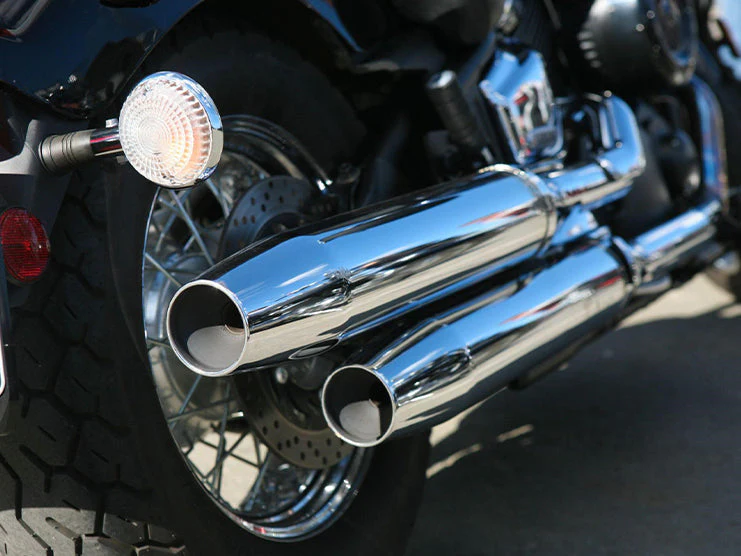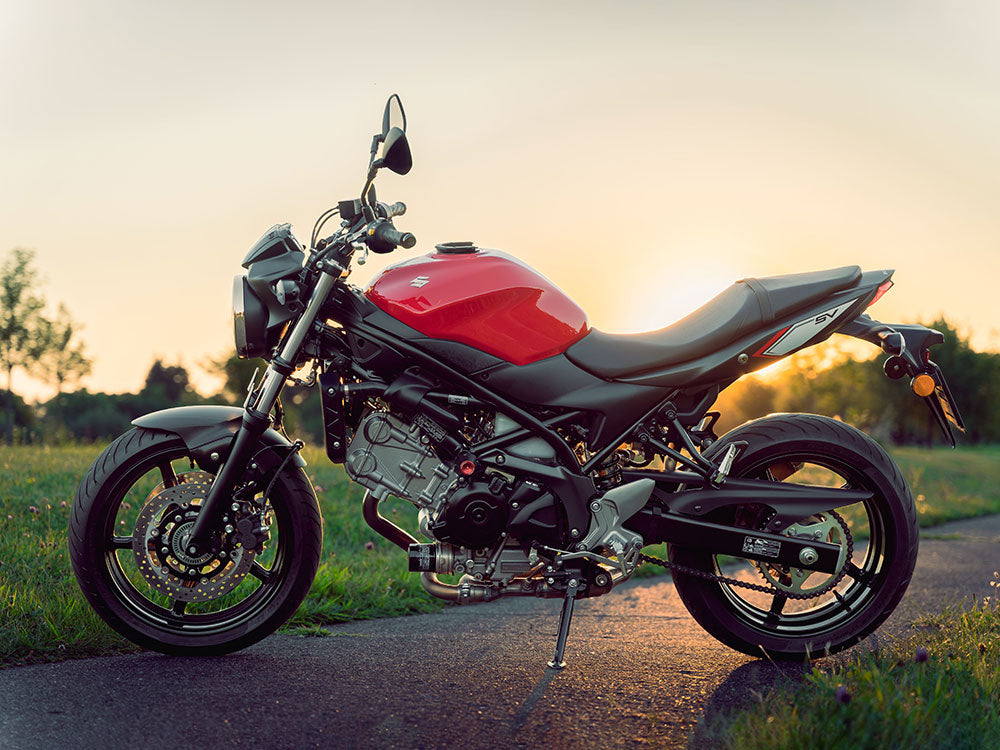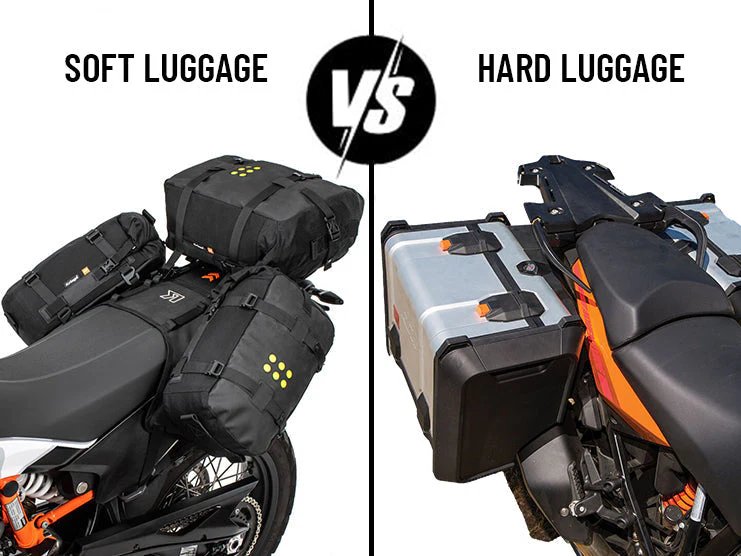Table of Content
| Motorcycle Exhaust Parts |
|---|
| Exhaust pipes |
| Exhaust collector |
| Catalytic converter |
| Muffler |
| Oxygen sensor |
| Silencer |
| Required Tools for Motorcycle Exhaust Cleaning |
|---|
| Hand gloves |
| Goggles and mask |
| Scotch-Brite |
| Cleaning brush |
| Water |
| Bucket |
| Caustic soda |
| Acid or vinegar |
| Nuts and bolts |
| Cleaning Process |
|---|
| Remove the exhaust system |
| Clean and restore |
| Polish with metal polish |
| Benefits of Cleaning the Motorcycle Exhaust |
|---|
| Reduces noise pollution |
| Reduces air pollution |
| Improves overall performance |
| Precautions |
|---|
| Do not touch any chemicals and protect your skin |
| Wear gloves, goggles, and masks |
| Clean the motorcycle exhaust in an open area |
| Do not remove the exhaust system if you do not know how to reassemble it |
It is crucial to keep the exhaust clean to improve the efficiency of your motorcycle’s engine. A dusty and rusty exhaust causes your motorcycle’s performance to deteriorate and the ending to consume more fuel. Regular cleaning also ensures the exhaust lasts longer.
1. Motorcycle Exhaust Parts
The motorcycle exhaust parts include the following:
1.1 Exhaust Pipes

Exhaust pipes are connected to the engine and divert smoke and other harmful fumes away. The number of exhaust pipes varies between models.
1.2 Exhaust Collector

The exhaust collector is the main pipe connected to the exhaust pipes, collecting harmful fumes and expelling them into the air. Exhaust pipes and collectors are also referred to as headers.
1.3 Catalytic Converter
The catalytic converter is connected to the exhaust pipes and converts harmful gasses into carbon dioxide and water.
1.4 Muffler
The muffler lowers the volume of the engine noise and helps reduce noise pollution.
1.5 Oxygen Sensor
Oxygen sensors are situated near the collector. The function of these sensors is to sense the amount of oxygen gas inside the engine emission. The quantity of oxygen gas in the emission is sent to the electronic control unit, which determines whether the engine increases or decreases fuel consumption.
1.6 Silencer
Inside the muffler, the silencer is responsible for reducing sound when air travels through.
2. Required Tools for Cleaning Motorcycle Exhaust
The tools required to clean the exhaust include the following:
- Hand gloves
- Goggles and mask
- Scotch-Brite
- Cleaning brush
- Water (with pressure)
- Bucket
- Caustic soda
- Acid (vinegar can be used as an alternate)
- Nuts and bolts
3. Cleaning Process for the Motorcycle Exhaust
The steps for cleaning the motorcycle exhaust include the following:
3.1 Remove the Exhaust From the Motorcycle
To clean the exhaust, it is not mandatory to unbolt and remove it from the motorcycle. But if you know how to disassemble the exhaust, you can also clean it after it has been removed.
Remove the muffler and loosen the stainless steel pipes. If you are familiar with how to remove the exhaust from the motorcycle, it is suggested you clean it before reassembling it. Removing it incorrectly could damage your motorcycle.
3.2 Clean and Restore the Exhaust
To clean the exhaust, you can use the following methods:
Method 1:
- If you have disassembled the exhaust pipes, dip them into a bucket full of water mixed with caustic soda.
- While dipping the pipes into the bucket, use Scotch-Brite to remove dirt and rust from the exterior and use a brush to clean the interior.
- After being cleaned completely, rinse the pipes using a high-pressure water hose.
Method 2:
- Remove the complete exhaust system, including the exhaust pipes and collector.
- Wear thick gloves to protect your hands.
- Use concentrated hydrochloric acid or a similar acid to clean the pipes. Dip Scotch-Brite into the acid and clean the surface of the exhaust by rubbing it down.
- Leave acid on the surface for a few minutes so that it can dissolve dust and rust and make them easier to remove.
- After cleaning with acid, wash the pipes with water. Be careful to not touch the acid to avoid irritating your skin.
Method 3:
- The exhaust can be cleaned without removing it from the motorcycle. Just scrub the headers with a Scotch Brite and use acid, caustic soda, or vinegar while keeping them connected to the motorcycle.
3.3 Polish the Exhaust Pipes
After cleaning the headers, make the exhaust shiny again by applying metal polish. There is a variety of metal polishes available on the market. You can apply polish to the exhaust using a microfiber cloth. Machines are also used for polishing purposes.
The easiest way to polish the exhaust pipes is by using microfiber cloths:
- Apply polish on the cloth and rub the pipes gently.
- After a few minutes, wipe off the metal polish from the exhaust using another clean cloth.
After polishing the headers, passivation can be done using diluted citric acid. You can use a 10% solution of citric acid for this process. This helps make stainless steel products resistant to corrosion by removing free ferrous contaminants from the surface.
4. Benefits of a Clean Motorcycle Exhaust
Here are some benefits of cleaning a motorcycle exhaust:
4.1 Reduce Noise
If the exhaust is left uncleaned for a long time, its muffler will not work efficiently due to the dust build-up. A dirty exhaust will produce loud sounds and cause noise pollution.
4.2 Reduce Pollution
The catalytic converter may also become faulty if the exhaust is not cleaned for a long time. If the catalytic converter is not working properly, the engine will emit harmful gasses and cause air pollution.
4.3 Improve Performance
If the motorcycle exhaust is not clean, the engine has to work harder and use more fuel to expel smoke and other gasses. This will affect the efficiency of the engine and the overall performance of the motorcycle indirectly.
5. Precautions
Listed below are precautions you should take when cleaning the exhaust:
5.1 Try to Avoid Touching Any Chemicals
Cleaning the exhaust requires using various chemicals like caustic soda, vinegar, acid, and metal polish. These chemicals, especially acid, can cause irritation in the skin. Wear gloves, mask, and goggles to protect your hands and face.
5.2 Clean in a Wide Open Space
Motorcycle exhaust pipes are longer and must be cleaned in a wide open space. Furthermore, some cleaning products contain chemicals with odors or are volatile. If you are cleaning in a small room, it could harm your respiratory system. Furthermore, cleaning in a wider space gives you more room to maneuver when cleaning.
5.3 Learn How to Remove the Exhaust Pipes
Only if you know how to remove and fix a pipe is it recommended you remove the pipe. Otherwise, try to clean it while it is still installed on the motorcycle. There are many videos and blogs on the internet that can provide tips on how to remove exhaust pipes.
6. FAQs
1. Is it okay to wash your motorcycle’s exhaust?
Answer: Yes, it is fine to wash your motorcycle exhaust. You can wash it using soap, shampoo, or detergent.
2. How often is it recommended to clean the motorcycle exhaust?
Answer: It is recommended you clean the motorcycle exhaust after one year. For better performance, clean it after 6-7 months.
3. What are motorcycle exhausts made of?
Answer: Motorcycle exhausts are usually made of stainless steel. They can also be constructed from steel pipes coated with ceramics.
7. Conclusion
The motorcycle exhaust must be cleaned regularly since its condition can affect the overall performance of your motorcycle and its engine. The exhaust can be cleaned using soap, detergent, and caustic soda. You can also use acid to clean the rust. But to restore the shine of the exhaust, it is best to use polish.
The motorcycle exhaust removes gas emissions from the engine. If left uncleaned for a long time, the exhaust can produce loud and irritating sounds, have difficulty removing gasses from the header, and cause the engine to become overworked. As a result, the engine will use more fuel to expel gas emissions from the exhaust.
Viking Bags has many motorcycle parts and luggage options available, including handlebars, sissy bars, fairing, crash bars, sissy bar bags, and saddlebags you can install for a better riding experience.













Leave a comment
All comments are moderated before being published.
This site is protected by hCaptcha and the hCaptcha Privacy Policy and Terms of Service apply.